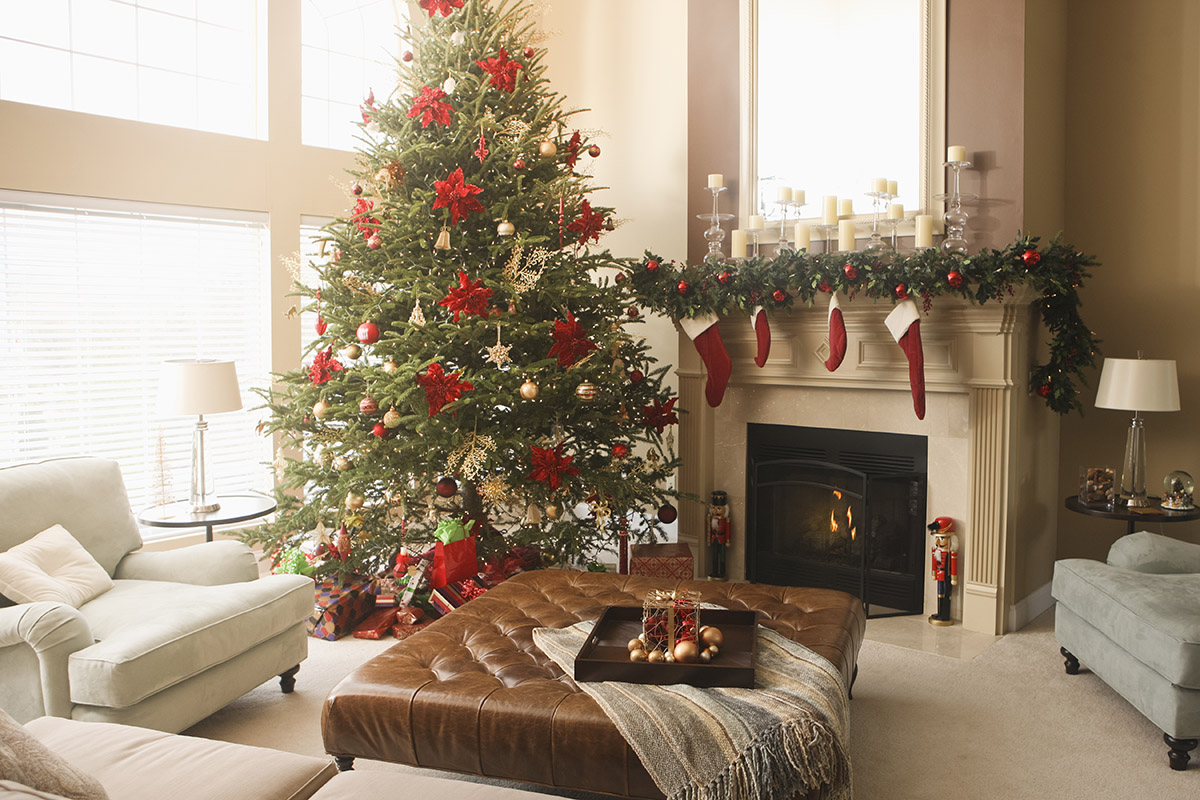Why People Decorate for Christmas: Unveiling the Tradition

Every year as December approaches, homes, streets, and cities around the world undergo a magical transformation, adorned with twinkling lights, wreaths, trees, and countless festive decorations. This tradition of decorating for Christmas is rich with cultural significance, historical origins, and psychological benefits that enhance our festive experiences. In this exploration, we will delve into the reasons behind this beloved custom.
The Historical Roots of Christmas Decorating

The act of decorating during the winter solstice is not new. Here are some key historical aspects:
- Pagan Origins: Before Christianity, many cultures celebrated midwinter festivals which included decorations to ward off the darkness or bring light into their homes. Druids used holly and mistletoe for their magical properties, while Romans decorated with greenery during Saturnalia to symbolize life during the coldest season.
- Victorian Era Influence: Much of what we recognize as modern Christmas decor began during the Victorian era in England. Queen Victoria and Prince Albert made decorating evergreen trees fashionable. Their influence popularized the use of candles, handmade ornaments, and even stockings.

Symbolism Behind the Decorations

Each piece of decoration carries with it layers of meaning:
- Christmas Tree: Evergreen trees symbolize eternal life and the promise of new beginnings. The star or angel on top represents the star of Bethlehem or divine presence over Jesus.
- Lights: Originally candles, now electric, lights on the tree or in homes signify Jesus as the light of the world, casting away darkness, symbolizing hope and enlightenment.
- Wreaths: A circle with no beginning or end represents eternal life, the continuity of life, and victory over death.
| Decoration | Symbolism |
|---|---|
| Christmas Tree | Eternal life, hope, life amidst winter |
| Candles/Lights | Jesus as the light, enlightenment, celebration |
| Wreath | Eternal life, victory, continuity |

💡 Note: The symbolism has evolved over time, but many of the original meanings are still cherished and passed down through generations.
Psychological and Social Benefits

Decorating for Christmas has several benefits:
- Enhancing Mood: The colors and lights can trigger joy and increase serotonin levels, acting as natural antidepressants during the gloomy winter months.
- Community Bonding: The act of decorating can bring families and communities together, fostering a sense of unity and belonging.
- Tradition and Nostalgia: Engaging in decorations connects individuals to their past, evoking memories and creating a bridge between generations.

Commercial and Economic Impact

The festive season is also an economic powerhouse:
- Retail Sales: From ornaments to trees, lighting, and gifts, Christmas decoration sales significantly boost economies. Retail stores thrive on holiday decor sales, with many items purchased exclusively for this season.
- Local Businesses: Christmas markets, craft fairs, and holiday-themed activities provide income for local artisans, farmers, and small businesses.
The Evolution of Decorations

Decorations have not remained static:
- Technology: LED lights, smart decorations that sync to music, and themed inflatable lawn figures are modern additions to the tradition.
- Eco-Friendly Trends: There's a shift towards sustainable practices, with decorations made from recycled materials, and a greater emphasis on reusing rather than buying new.
💡 Note: While embracing modern trends, many still cherish traditional decorations for their authentic charm and cultural significance.
In closing, the practice of decorating for Christmas is a blend of historical tradition, deep symbolism, psychological benefits, and economic stimulus. From pagan roots to Victorian influences, from symbols of life and light to the communal joy of decoration, this tradition continues to evolve, adapting to contemporary tastes and technologies while still retaining its core significance. The festive adornments not only beautify our surroundings but also enrich our emotional lives, connecting us to our heritage and the global community.
Why do we decorate with lights at Christmas?

+
Lights symbolize the light of Jesus, bringing hope and enlightenment, transforming the darkness of winter into a time of celebration.
What does a Christmas wreath signify?

+
Wreaths represent the continuity of life, eternal life, and victory over death with their circular, unending shape.
Are there eco-friendly Christmas decorations?

+
Yes, sustainable decorations can be made from recycled materials or through reusing items. LED lights, natural decorations like pine cones, and even upcycled ornaments are all eco-friendly options.



